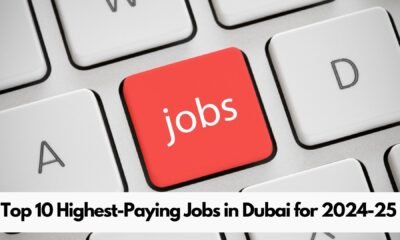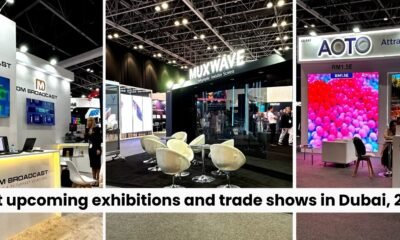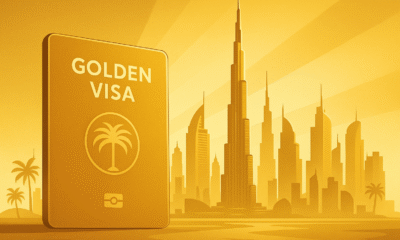Blog
Why Choose an Exhibition Booth Builder in Oman for Your Next Expo?

Introduction to Exhibition Stand Building
Creating a memorable presence at trade shows, conferences, or product launches requires more than just a simple backdrop. An exhibition stand serves as a physical embodiment of a brand’s identity, values, and messaging. When a company decides to invest in a custom-built exhibit, it is looking for a solution that balances visual impact, functional layout, and logistical practicality. The process involves a collaboration between designers, engineers, fabricators, and on‑site crews, each contributing specialized expertise. Understanding the full lifecycle of a stand-from concept to dismantling-helps businesses set realistic expectations and achieve a cohesive experience for visitors.
Understanding the Role of Exhibition Stand Builders
Exhibition stand builders act as project managers, craftsmen, and problem solvers all at once. Their responsibilities start with interpreting a client’s brief and translating abstract ideas into tangible structures. They coordinate with architects, graphic designers, and technology providers to ensure that every element, from lighting to interactive displays, works together seamlessly. Throughout the build phase, they oversee material procurement, quality control, and compliance with venue regulations. On the day of the event, they manage the installation crew, troubleshoot unforeseen issues, and guarantee that the stand meets safety standards. This comprehensive approach allows exhibitors to focus on engagement rather than construction details.
Project Planning and Coordination
Effective planning begins with a detailed timeline that outlines design approvals, fabrications, shipping, and on‑site assembly. Builders create a master schedule that aligns with the exhibition calendar, allowing sufficient buffer time for customs clearance and unexpected delays. Coordination involves regular communication with the client’s marketing team, venue officials, and third‑party vendors such as audio‑visual specialists. By mapping out responsibilities and milestones, builders reduce the risk of last‑minute changes that could compromise the stand’s quality or functionality. A well‑structured plan also supports budget adherence, as each phase can be monitored for cost efficiency.
Material Selection and Sustainability
Choosing the right materials influences both the visual appeal and the environmental footprint of a stand. Modern builders prioritize lightweight aluminum frames, recyclable plastics, and responsibly sourced wood to create sturdy yet transportable structures. Sustainable options, such as modular panels that can be reused across multiple events, help reduce waste and lower long‑term expenses. Additionally, selecting fire‑retardant fabrics and low‑VOC finishes ensures compliance with safety regulations while protecting the health of staff and visitors. Builders stay informed about emerging eco‑friendly technologies, allowing clients to showcase their commitment to sustainability through the very fabric of their exhibit.
Key Considerations When Choosing a Local Provider
When searching for reliable expertise, many organizations start by reviewing local directories and industry listings. A strong reputation often correlates with a robust portfolio that demonstrates versatility across different sectors. Potential partners should be able to provide case studies, client testimonials, and evidence of successful project delivery under tight deadlines. In addition, a provider’s familiarity with regional logistics, import regulations, and venue specifications can streamline the planning process. By evaluating these factors, businesses can select a builder who not only meets creative expectations but also navigates practical challenges with confidence. Exhibition stand builders in Oman
Design Trends Shaping Modern Exhibits
Contemporary exhibition design emphasizes immersive experiences that invite interaction and storytelling. Brands are moving away from static displays toward dynamic environments that incorporate digital screens, augmented reality, and tactile elements. Open floor plans encourage fluid movement, while strategic lighting highlights key products and creates mood. Natural textures, such as reclaimed wood or stone veneers, add warmth and authenticity. These trends reflect a broader shift toward human‑centered design, where the visitor’s journey is mapped out to maximize engagement and memorability. Staying abreast of these developments enables exhibitors to craft stands that resonate with today’s audience.
Interactive Technology Integration
Integrating technology into a stand can transform passive observation into active participation. Touch‑screen kiosks, virtual product demos, and live social media feeds allow visitors to explore features at their own pace. Builders collaborate with tech partners to ensure that hardware is securely mounted, cabling is concealed, and power requirements meet venue standards. Proper integration also involves testing connectivity and user interfaces before the event to avoid technical glitches. When executed smoothly, technology becomes a catalyst for deeper brand connection and data collection, providing valuable insights for post‑event analysis. Exhibition stand contractors in Oman
Modular and Reusable Structures
Modular designs offer flexibility for brands that attend multiple shows throughout the year. By constructing interchangeable components, builders enable rapid reconfiguration to suit varying booth sizes and layouts. This approach reduces lead times, minimizes storage space, and cuts transportation costs. Additionally, reusable elements support sustainability goals by extending the lifespan of materials. Designers often incorporate neutral base modules that can be customized with graphics, lighting, or interactive stations specific to each event. The result is a versatile system that balances brand consistency with the adaptability required for diverse exhibition environments.
Logistics and On‑Site Execution
Transporting a stand from the workshop to the exhibition hall involves careful coordination of shipping, customs clearance, and local handling. Builders work with freight forwarders to select the most efficient routes, whether by air, sea, or land, while ensuring that all documentation complies with regional regulations. Once the cargo arrives, a dedicated on‑site team oversees unloading, inventory checks, and placement of structural components. Clear labeling and systematic packing simplify the assembly process, allowing crews to erect the stand within the allotted time window. Effective logistics management minimizes stress and keeps the focus on delivering a polished final product.
Transportation and Customs Clearance
International exhibitions often require navigating complex customs procedures, especially when large structural elements cross borders. Builders prepare detailed packing lists, material safety data sheets, and invoices to expedite clearance. They also anticipate potential duties or taxes and advise clients on cost implications. By partnering with experienced customs brokers, builders mitigate the risk of delays that could impact installation schedules. Proper documentation, combined with proactive communication with port authorities, ensures that all components arrive intact and ready for assembly. Exhibition stand design company in Oman
Installation Timelines and Safety
On the day of installation, safety is paramount. Builders conduct site surveys to identify hazards, verify load‑bearing capacities, and confirm that emergency exits remain unobstructed. They employ trained technicians who follow industry‑standard procedures for rigging, electrical work, and structural fastening. A clear timeline outlines each step, from positioning the framework to attaching graphics and lighting. Continuous monitoring during the build allows for swift resolution of any issues that arise, ensuring the stand is ready for the opening of the exhibition without compromising worker safety or regulatory compliance.
After‑Event Services and Storage Solutions
Once the exhibition concludes, the dismantling process begins. Efficient disassembly reduces labor costs and prepares components for either storage or recycling. Builders label each piece during the build phase, making it easier to track items during breakdown. They also coordinate with the venue to adhere to waste disposal guidelines, separating recyclable materials from non‑recyclable ones. For brands that plan to reuse their stand, builders offer secure storage facilities that protect against moisture, dust, and damage. This end‑to‑end service ensures that the investment continues to deliver value long after the event has ended.
Disassembly and Recycling
Responsible dismantling involves careful removal of structural elements, electronics, and decorative finishes. Builders prioritize the reuse of high‑value components, such as aluminum frames and modular panels, while responsibly recycling or disposing of single‑use materials. By following best practices for waste segregation, they help clients achieve sustainability targets and reduce the environmental impact of their exhibit. Detailed inventory reports are provided after each event, outlining which items are being stored, refurbished, or recycled. This transparency supports informed decision‑making for future exhibitions. Exhibition booth design company in Oman
Long‑Term Partnerships
Building a lasting relationship with a stand builder can streamline future projects. When a provider already understands a brand’s visual language, logistical preferences, and performance metrics, the planning phase becomes more efficient. Ongoing collaboration also opens opportunities for continuous improvement, such as incorporating feedback from previous events into new designs. Many builders offer maintenance services, upgrades, and technology refreshes to keep stands current with evolving market trends. By nurturing these partnerships, businesses can focus on strategic objectives while relying on trusted expertise for the physical execution of their exhibition presence.
Measuring Success of an Exhibition Stand
Evaluating the effectiveness of a stand involves both quantitative and qualitative metrics. Visitor traffic can be tracked through footfall counters, badge scans, or digital engagement tools. Qualitative feedback, gathered via surveys or informal conversations, provides insight into brand perception and message clarity. Additionally, lead generation data-such as contact forms submitted or product inquiries-offers a direct link to potential sales outcomes. Post‑event analysis combines these data points to assess return on investment and identify areas for improvement. By establishing clear objectives before the event, exhibitors can measure success against predefined benchmarks.
Visitor Engagement Metrics
Modern stands often incorporate interactive stations that capture real‑time data on user interactions. Heat‑mapping software can reveal which areas attract the most attention, while dwell time measurements indicate how long visitors stay at specific displays. These insights help designers refine layout and content placement for future shows. Moreover, social media monitoring can gauge online buzz generated by the stand, providing a broader view of its impact beyond the physical venue. Consistent tracking of these metrics enables a data‑driven approach to exhibit strategy.
Lead Generation and Follow‑Up
Effective lead capture systems integrate with customer relationship management (CRM) platforms, allowing sales teams to nurture prospects promptly after the event. Builders often advise on the placement of QR codes, digital sign‑up tablets, and NFC tags to simplify data collection. Ensuring that these tools are seamlessly integrated into the stand’s design enhances user experience and improves conversion rates. Follow‑up communication, timed appropriately, reinforces the brand message and moves leads further along the sales funnel. Exhibition booth builder in Oman
Conclusion
Choosing the right partner for exhibition stand construction can dramatically influence a brand’s visibility and visitor experience at trade shows. By focusing on comprehensive planning, innovative design, reliable logistics, and sustainable practices, exhibitors can create compelling spaces that resonate with their target audience. Continuous evaluation of performance metrics ensures that each investment builds on previous successes. For businesses seeking expertise that combines creativity with operational excellence, exploring the offerings of local specialists is a prudent step. In particular, Stands Bay provides a valuable resource for those looking to enhance their exhibition presence.
Blog
Looking for a GCS Crypto Currency Licence and Registration in Dubai?

Looking for a GCS Crypto Currency Licence and Registration in Dubai?
Welcome to our guide on Crypto currency license in Dubai. At GCS, we specialize in providing top-quality Crypto currency license services to meet your needs.
Why Choose Our Crypto currency license Services?
Our team of experienced professionals understands the importance of quality Crypto currency license in Dubai. We pride ourselves on delivering exceptional results and customer satisfaction.
Our Approach to Crypto currency license
We take a comprehensive approach to Crypto currency license, ensuring that every aspect of our service meets the highest standards. Our process includes:
- Thorough consultation to understand your specific needs
- Customized solutions tailored to your situation
- Ongoing support throughout the process
- Transparent communication at every step
Important Resources
For more information about Crypto currency license, check out these valuable resources:
- Crypto Currency Licence in Dubai
- Dubai Crypto Currency Licence
- Crypto Currency Registration in Dubai
- Dubai Crypto Currency Registration
- GCS Crypto Currency Licence in Dubai
Get Started Today
Ready to experience the difference our Crypto currency license services can make? Contact GCS today to schedule your consultation. Our team is standing by to answer your questions and help you get started on the path to success.
Don’t wait – reach out to us today and discover why so many people in Dubai trust GCS for their Crypto currency license needs.
Blog
Best Crypto currency license Services in Dubai

Best Crypto currency license Services in Dubai
Welcome to our guide on Crypto currency license in Dubai. At GCS, we specialize in providing top-quality Crypto currency license services to meet your needs.
Why Choose Our Crypto currency license Services?
Our team of experienced professionals understands the importance of quality Crypto currency license in Dubai. We pride ourselves on delivering exceptional results and customer satisfaction.
Our Approach to Crypto currency license
We take a comprehensive approach to Crypto currency license, ensuring that every aspect of our service meets the highest standards. Our process includes:
- Thorough consultation to understand your specific needs
- Customized solutions tailored to your situation
- Ongoing support throughout the process
- Transparent communication at every step
Important Resources
For more information about Crypto currency license, check out these valuable resources:
- Crypto Currency Licence in Dubai
- Dubai Crypto Currency Licence
- Crypto Currency Registration in Dubai
- Dubai Crypto Currency Registration
- GCS Crypto Currency Licence in Dubai
Get Started Today
Ready to experience the difference our Crypto currency license services can make? Contact GCS today to schedule your consultation. Our team is standing by to answer your questions and help you get started on the path to success.
Don’t wait – reach out to us today and discover why so many people in Dubai trust GCS for their Crypto currency license needs.
Blog
Dubai 2025: The Tech Revolution Unveiled – From Smart Cities to AI‑Driven Innovation
Dubai has always been a city that looks toward the future. From its iconic skyline to its ambitious plans for sustainability, the spirit of innovation is woven into every project. In 2025, the city is stepping into a new era where technology is not just a tool but a living system that powers everyday life, reshaping how residents work, travel, shop and connect.
1. The Birth of a Smart City
When most people think of a smart city, images of connected traffic lights, billboards that update in real time, and drones delivering packages come to mind. Dubai’s journey began with the Smart Dubai programme, which set out to create a city where digital services are delivered more efficiently and transparently. The programme’s core goals were:
- Digital identity for citizens and residents.
- Integrated data platform for city services.
- Smart infrastructure that adapts to real‑time needs.
- Encouragement of start‑ups and tech investment.
These pillars laid the groundwork for a city that can react to the needs of its people instantly, making daily life smoother and more rewarding. This foundation also helped launch a wave of projects that pushed Dubai ahead of the global curve.
2. Artificial Intelligence Takes the Driver’s Seat
Artificial Intelligence (AI) has become the engine behind many of Dubai’s newest achievements. From predictive policing that helps keep streets safe to AI‑powered logistics that reduce delivery times, the technology is changing every sector.
Transportation and Mobility
The Dubai Metro’s robots now run maintenance checks without human intervention. Autonomous buses navigate the sidewalks, delivering passengers between business districts with minimal delays.
Healthcare Revolution
AI algorithms predict potential health risks based on lifestyle and genetic data, allowing doctors to intervene early. Virtual consultations powered by AI chatbots provide instant medical advice, freeing up specialists for complex cases.
Public Safety and Law Enforcement
Machine‑learning models detect unusual crowd movements and highlight potential security threats before they grow. Law‑enforcement drones patrol the city, ensuring that emergency response is swift and efficient.
By embedding AI into everyday services, Dubai turns its metropolis into a responsive organism that learns and grows with its people.
3. Blockchain: The Invisible Ledger of Modern Life
While blockchain has made headlines in finance, its real power lies in its transparency and security. Dubai has leveraged the technology to create tamper‑proof systems across government, healthcare, and logistics.
One notable example is the Digital Health Pass—an immutable record that tracks vaccination, medical history, and health alerts. Similarly, property transactions are recorded on a blockchain, cutting down paperwork and fraud while speeding up closing times.
These applications not only add value for the government but also provide a sense of trust for residents and investors alike.
4. The Architecture of Tomorrow: Smart Skyscrapers and Infrastructure
Dubai’s skyline is home to more than just office space; it is a living laboratory for sustainable design. Buildings now incorporate:
- Energy Harvesting Windows: Transparent solar panels that provide electricity to the building’s systems.
- Responsive Facades: Skin that adjusts to sunlight and temperature, keeping interiors comfortable while lowering energy usage.
- Water Recycling Systems: On‑site purification that reduces municipal water demand.
These features not only reduce carbon footprints but also lower operational costs, making high‑rise living accessible to a wider audience.
5. Technology Hubs and the Start‑up Ecosystem
The city’s growth is driven partly by its vibrant ecosystem for technology start‑ups. Numerous incubators provide mentorship, financing, and access to venture capital. Key areas of focus include:
- FinTech solutions simplifying banking for the cloud‑native generation.
- EdTech platforms that bring personalized learning to anyone on the move.
- HealthTech that integrates wearable data with AI diagnostics.
- Supply chain technology creating end‑to‑end traceability.
Dubai’s open data initiatives give start‑ups a wealth of information—making it easier to test and scale products that fit the local market and can also export worldwide.
6. The Human Touch: Building Tech Culture
Innovation is only as good as the people behind it. Dubai invests heavily in human capital: from schools teaching coding from kindergarten to higher‑education programmes that put AI and blockchain at the forefront.
Workshops lead residents to create their own mini‑projects, giving them a sense of ownership over the urban digital narrative. These efforts foster a public appetite for technology, ensuring that the next wave of ideas will come from diverse voices.
7. Looking Ahead: What Lies Beyond 2025?
The ambition never stops. While 2025 has delivered massive strides, the sights are now set on a more interconnected yet sustainable system.
- Zero‑carbon buildings enabled by nanomaterials.
- Hyper‑fast transport links into the desert, turning islands into bustling hubs.
- Advanced AI that helps residents live healthier lifestyles by predicting needs.
- Fully autonomous commercial districts where order and efficiency thrive.
These future projects are based on data collected in real time, meaning the city can adapt quickly to changing aspirations.
Dubai’s transformation demonstrates how creating a digital ecosystem, backed by supportive policy, can accelerate progress for all residents and set a global example for future city planning.
Want to read more about how Dubai is turning skyscrapers into AI hubs? Explore our story on skyscraper AI transformation.
Curious how the city’s smart system uses AI and blockchain to improve everyday life? Dive into the pulse of Dubai’s tech evolution.
Still wondering how visionary dreams turned into a reality of smart cities and AI? Discover the journey of Dubai’s tech pulse.
-

 Business2 years ago
Business2 years agoTop 10 Highest-Paying Jobs in Dubai for 2024-25
-

 Business2 years ago
Business2 years agoTop 10 Business Opportunities in Dubai for 2024-2025
-

 Business2 years ago
Business2 years agoBest upcoming exhibitions and trade shows in Dubai, 2024
-

 Business1 year ago
Business1 year agoHow Much Does It Cost to Open a Company in Dubai in 2024?
-

 Sports2 years ago
Sports2 years agoTop 5 Upcoming International Sporting Events in Dubai (2024-2025)
-

 Blog2 years ago
Blog2 years agoPlaces to Visit in Ras Al Khaimah
-

 Latest4 months ago
Latest4 months agoDubai Golden Visa 2025: Everything You Need to Know About Eligibility, Benefits and Application Process
-

 Business2 years ago
Business2 years agoTop 5 Networking Events for Businesses in Dubai in 2024



